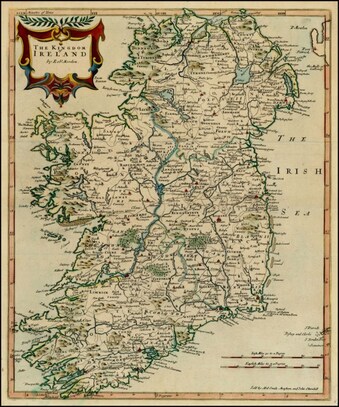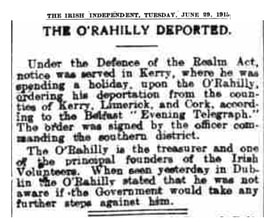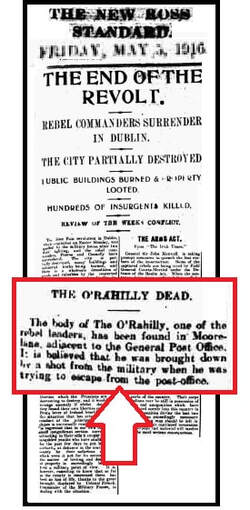|
Prince Charles explains 'pebble theatre'.
|
PEBBLE
|
|
Don Pierson [right] explains how a young Prince Charles made a request to join the Radio London fan club. |
|
|
Prince Charles explains 'pebble theatre'.
|
PEBBLE
|
|
Don Pierson [right] explains how a young Prince Charles made a request to join the Radio London fan club. |
|
 While not always intending to be political arch-propagandists, tellers of history are sometimes the most dishonest bunch of trouble-makers to ever populate this Planet. Their work is often the relied-upon excuse to start wars of so-called restitution or even retribution. That is why we do our best to avoid using the word history and call ourselves 'YesterTecs'. There is a difference; a big difference between historians and YesterTecs. Our approach is that of a team of detectives who are reopening and researching a cold crime case: a case where everything is claimed to have been settled, and where the "good" and the "bad" have already been identified and defined to the satisfaction of those telling the tales of history. Those are the tales oft-repeated by one Teller quoting another Teller. Yet there remains those vague blank-spots that no one else seems to talk about. That's where YesterTecs enter the picture! The story of the past as it relates to the archipelago known as the British Isles, includes the island of Ireland, a land drenched in blood of those wanting freedom by those wanting to dominate and control the inhabitants. As YesterTecs we examine all of the evidence, and as part of our own road to discovery, we have previously acknowledged the genealogical research work performed by Mark Humphrys: https://humphrysfamilytree.com/ORahilly/aodogan.html It is for similar reasons that we also acknowledge the work of: https://stairnaheireann.net/ It is from this source that we obtained both the antique map of Ireland by Barry Lawrence Ruderman, and other information that we now wish to draw your attention. That text appears under their heading of 'Key Events in Irish History'. We are not sure why, but in their timeline, number '9' is about the events of 1916, and that is followed by their number '10' concerning events that took place in 1972, which they have identified as referring to 'Bloody Sunday'. Their item '9' is headed: 'Sixteen Leaders of the Easter Rising are Executed'. In their reference paragraph that follows about "The men were leaders of the Easter Rising, which had exploded across central Dublin in late April"; there is no mention of 'The O'Rahilly'.
But since he was not that pioneer, fawning writers should have headed the advice given in the old TV commercial linked above. There is a lesson to be learned from that old TV commercial. Our own research into the origins of Radio Caroline has extended over decades, and it was by following various links and leads that we came across the person of 'Freeborn' John Lilburne. See: http://foundthreads.com/02.html Unlike Ronan O'Rahilly, 'Freeborn John' does hold valuable lessons for today, but again, unlike Ronan O'Rahilly, Lilburne has been ignored while the name of O'Rahilly has been promoted, and we would do well to see how that promotion of Ronan O'Rahilly began, and then became adopted for self-glorification. Now this brings us back to the person of Michael Joseph Rahilly who was born in 1875 and became involved with the Gaelic language revival movement. He then began restyling his name as "Rathaile" and "Ua Rathaille" and "O'Rahilly". Michael Rahilly; Rathaile; Ua Rathaille and O'Rahilly, is the person who died during the Easter Rising of 1916, and subsequently became identified as 'The O'Rahilly', as if there was only one of them. But there wasn't. We are inclined to think that Michael invented its use as a byline for his editorial work! But this is where the confusion begins with Michael's son Eon who began restyling himself as Aodogán when his birth names are Egan John Eoin O'Sullivan O'Rahilly. As we have previously noted, Aodogán was born in 1904 at Hove (Brighton), England, and like his dad Michael, he also married a U.S. citizen. All of this is extremely important because of the muddle that has been created as a result of these name modifications, and the true birth nation identity of the people concerned. This also bleeds over into the record of the Weatherwell company, and the property at Greenore. But we are taking all of this very slowly, one step at a time, because if ever there was a person who thrived on ambiguity and confusion, it was Ronan O'Rahilly!  In 1914, here is Michael Joseph Rahilly who is being identified as 'The O'Rahilly, and marked for deportation. In this news item he is further identified as the Treasurer and one of the principal founders of the Irish Volunteers. That entity cannot be immediately linked to the Irish Republican Army (IRA), although it was a precursor to events that followed which did involve IRA. But they took place after the death of Michael Rahilly. Michael Rahilly, also known in 1914 as 'The O'Rahilly', was assistant editor and circulation manager of the Irish nationalist newspaper 'An Claidheamh Soluis' ('Sword of Light'): published by the Gaelic League. It became the propaganda motivational source that eventually resulted in the failed 'Easter Rising' of 1916, during which, Michael Rahilly died.  Then we come to this news item of May 5, 1916: "The body of The O'Rahilly, one of the rebel leaders, has been found in Moore Lane; adjacent to the General Post Office, I; it is believed that he was brought down by a shot from the military when he was trying to escape from the post-office." This contemporary news report is at variance with other versions about the death of Michael Rahilly, but it seems to point to the idea that he coined his own newspaper byline as 'The O'Rahilly' when writing as assistant editor. You may now wonder why that has any relevance at all to the issues at hand, and here is the reason why: Some have been in the habit of claiming that Ronan O'Rahilly's father owned the Port at Greenore. He did not. He managed a company, of which he was also a director, that did. As previously explained, it was its own entity and not one-and-the-same as Ronan's father. That company bought property at two separate auctions at two different times, and the property that the company bought was land and improvements that were adjacent to what had at one time been a ferry terminal. That terminal was not owned by British Railways, yet some claim that it was, and they also claim that Ronan's father owned the "private port" at Greenore, which he did not. So specifics are very important, and this is also true when it comes to laying down the genealogical foundation for the life and times of Ronan O'Rahilly! There was more than one Irishman (other than Michael Rahilly), who referred to himself as 'The O'Rahilly'. Not only that, but at least one other person has been identified in a newspaper with that same byline, and that person was not a member of the newspaper profession! "The devil is in the detail", and this is especially true when it comes to the work of unpicking all of the nonsense that has been written about the English-born father of Ronan O'Rahilly, whose father married a lady from Pennsyvania and gave Ronan an American-born mother!
Part 9 of the Nightmare at Greenore will continue here tomorrow. Comments are closed.
|
Our team produced this free radio program for PCRL in Birmingham.
It was repeatedly broadcast on and after October 20, 1985. Click & listen! Blog Archive
August 2023
Copyright 2021 with all rights reserved.
|
Index |
Library |
|
